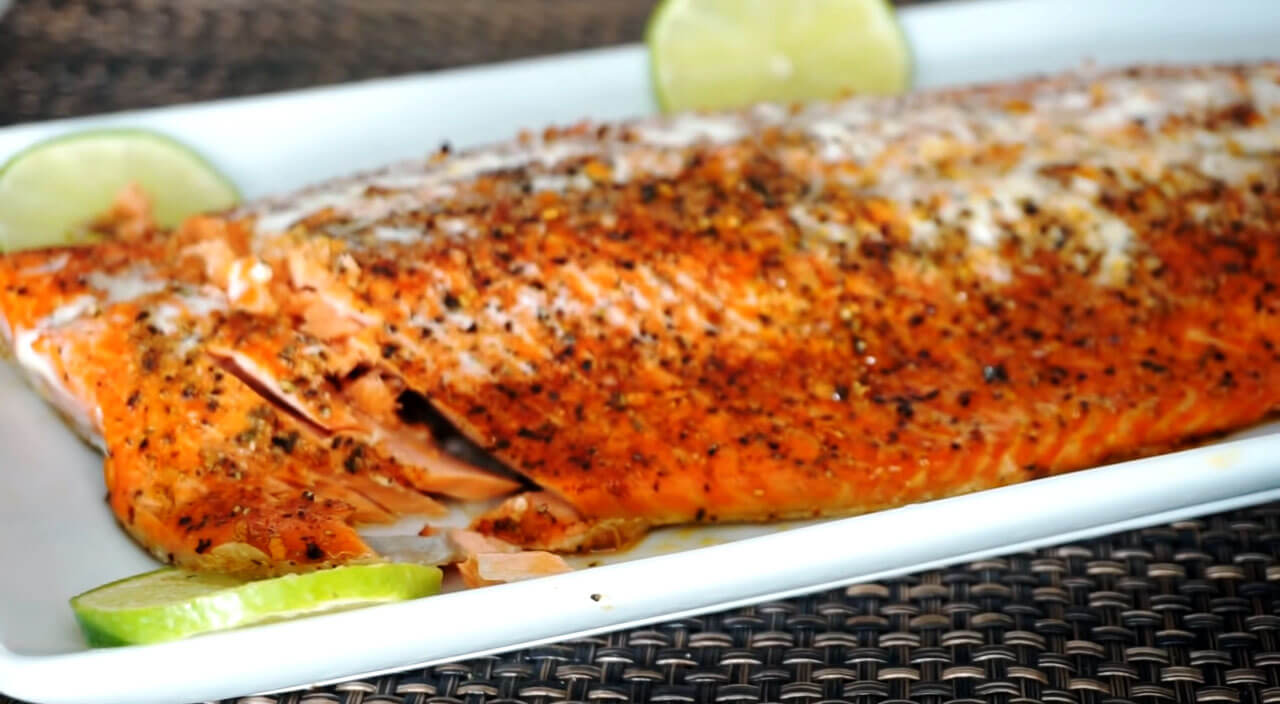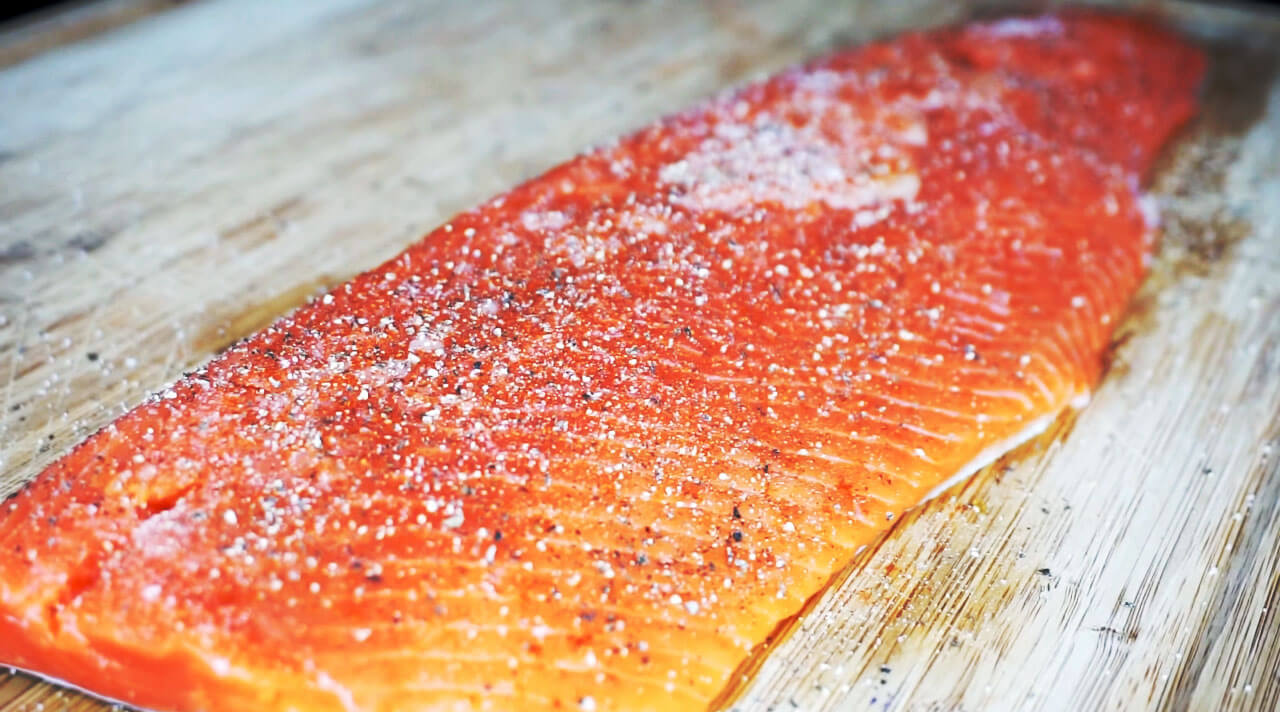
One of the most popular questions that home cooks ask is “How Long To Bake Salmon At 375?”
Even though salmon is the most popular seafood dish worldwide, it can be a little tricky for some people to cook, especially bake, at home. So, if you are struggling with this exotic and delicious dish, too, you’re not alone.
However, today’s post is all about baked salmon, and, hopefully, once you’re done reading it, all your questions regarding this subject will go away!
Nutritional Significance of Baked Salmon
Before we get on with baking salmon, let us discuss the benefits of this particular dish and why it is particularly famous worldwide.
- 170 calories
- 1 gram saturated fat
- 6 grams of total fat
- 25 grams of protein
- 75 milligrams cholesterol
- 20 milligrams calcium
- 0.27 milligrams iron
So, If You’re Thinking, “Is Baked Salmon Healthy?
" Here's your answer- yes, it is! A single serving of this delicious seafood has approximately 200 calories, an abundance of vitamin b12, pots of protein, and very low saturated fat content. Plus, the high quantities are iron, vitamin D, and potassium also boosts this dish's nutritional values.
Overall, baked salmon helps protect you from heart diseases, controls your blood pressure and sugar levels, improves your child's IQ during pregnancy, and helps burn fat to reduce weight.

Salmon Seasonings, Marinades, And Sauces:
Different kinds of salmon seasonings, sauces, and marinades are famous around the world. However, the most traditional and delicious one includes salt, pepper, garlic powder, and a bit of fresh lemon juice. This particular seasoning goes with almost any cuisine.
However, you can use any dry seasonings to switch up the flavor a little bit or add your favorite spices and herbs as well.
It is best to marinate your salmon for about 30 minutes in this seasoning before you put it in the oven. Finally, you may use any of your favorite sauces to go with the baked salmon fillet. You can make your personalized DIY sauce recipe at home or use a store-bought one; whichever serves your taste buds right!
Cooking Tools:
Before you start preparing and baking your sea dish, it is best to get all of your stuff ready! This "stuff" includes all the ingredients, tools, and equipment that you'll need during the process.
I only recommend this step as a part of the preparation because it saves a lot of time and hassle while you're in the middle of the baking process. (Trust me, you'll hate it when you have your hands dirty with seasoning and you can't find the oiling brush or the wiping cloth and the oven is waiting for you; it's an absolute mess!)
So, keep the following items ready on the counter before you start the process:
A Thermometer
These genius pieces of technology help you keep an idea of when the meat is ready to leave the oven. This way, you can significantly reduce the chances of your dish burning or coming out under cooked. You can get these in wireless designs, instant-read technology, various sizes, and stylish designs.
A Fish Spatula
While many people don't think that a fish spatula makes a difference, I believe they are a convenient part of your kitchen utensils. Yes, indeed, you can still bake a fish and serve it without one. However, having one of these can make your tasks so much easier, so I recommend you invest in one.
Salmon
Obviously! Get a good, fresh, high-quality salmon for your dish. Fish that looks bright and silver with moist and shiny flesh is almost always the best one. Avoid buying meat that smells too much like fish. Contrary to what most people believe, your salmon should not smell like fish; it should smell like seawater.
Also, remember to keep the salmon skin on. I understand that many people prefer skinless salmon, but the truth is, the skin helps keep your fish fresh and prevents it from drying while you're cooking it. Besides, if you don't like the skin, you can always remove it afterward or eat around it!
Spices And Seasonings
Select the appropriate spices and seasonings you want to use for your dish, and put them near your workplace. Doing this helps avoid any panicking situations while you're marinating or preparing the fish.
Oil
Get your favorite, preferred oil for the salmon but remember to use it in appropriate amounts. You don't want to soak the fish in oil when you're baking it!

How To Bake Salmon (Directions):
Once you have purchased the fillet, remove any bits of bones that you might find; make sure the fish is completely clean and dry.
Directions - 1
Take a sheet pan and line it with foil. Grease the foil lightly with any oil of your choice.
Directions - 2

Swipe and brush some of the oil over your fish as well.
Directions - 3
Apply the selected seasoning on the salmon generously.
Directions - 4
You can arrange some lemon slices around the fish or other vegetables if you want and squeeze some lemon on top.
Directions - 5
Bake the fish at 375 degrees Fahrenheit and let it cook for about 10 to 13 minutes.
Directions - 6
When it reaches approximately 125 degrees Fahrenheit, broil the fish some more for about 2 to 4 minutes. Doing this will help ensure that your fish stays moist and delicious.
Directions - 7
Remove the pan from the oven, use a fish spatula, and serve the hot baked salmon with the side dish!
FAQ Of Baking Salmon:
What Temp Should Salmon Be Cooked At?
Ideally, experts recommend baking salmon at 145 degrees Fahrenheit.
How Long Should I keep The Salmon In The Oven?
It takes about 10 to 15 minutes for the salmon to cook thoroughly. So, keep the fish inside the oven for at least that long. Keep a close eye on the fish once the timer crosses 15 minutes since it can easily overcook after that.
Can I Cook Salmon In The Oven Without The Foil?
If you don't have foil available in the house or don't want to use it, you can use parchment paper instead. Simply place your fillets on top of a large parchment sheet, season it, and add the preferred vegetables.
Now, wrap the parchment paper around a fish and let it bake as you would with foil.
How Do You Keep Salmon From Drying Out In The Oven?
Baking salmon with the skin intact is the number one way to avoid drying your fish in the oven. Moreover, brushing butter or oil on the salmon before putting it inside the oven is also a famous trick to keep the fish nice and moist.
Plus, broiling at the end of the baking can also help maintain the salmon's moisture and tenderness.

